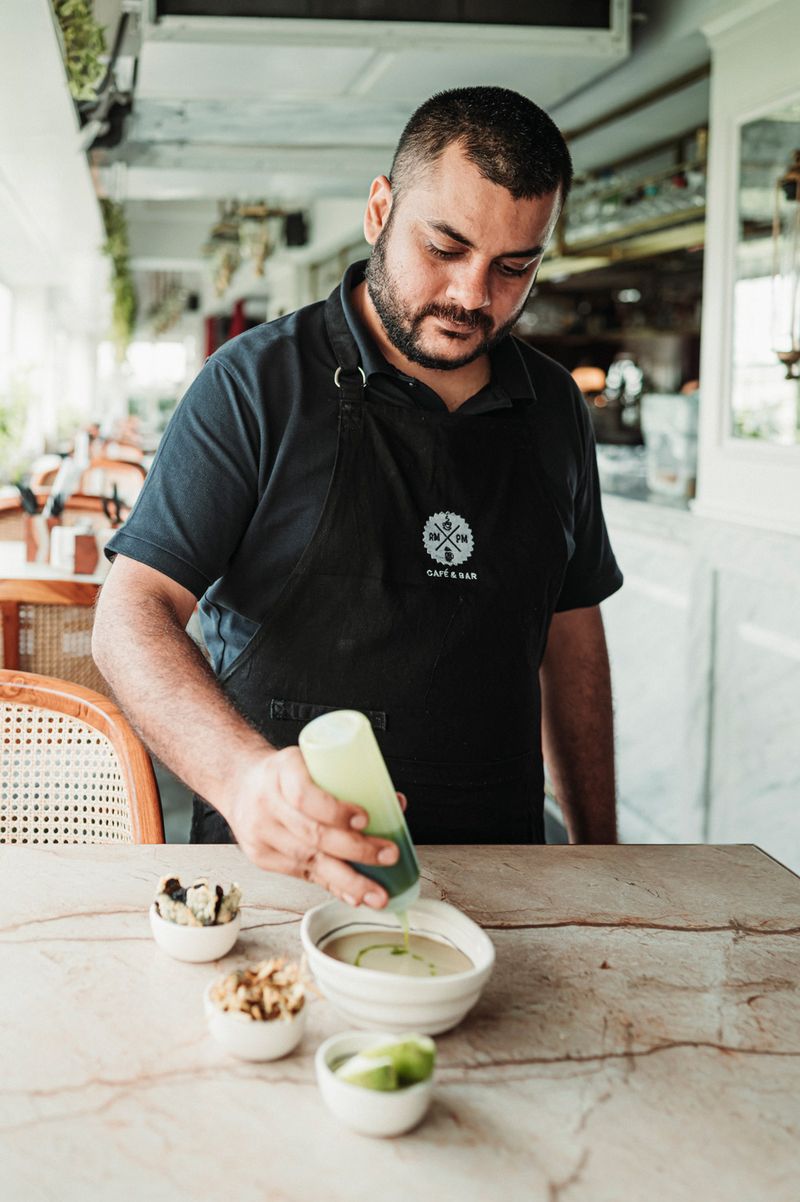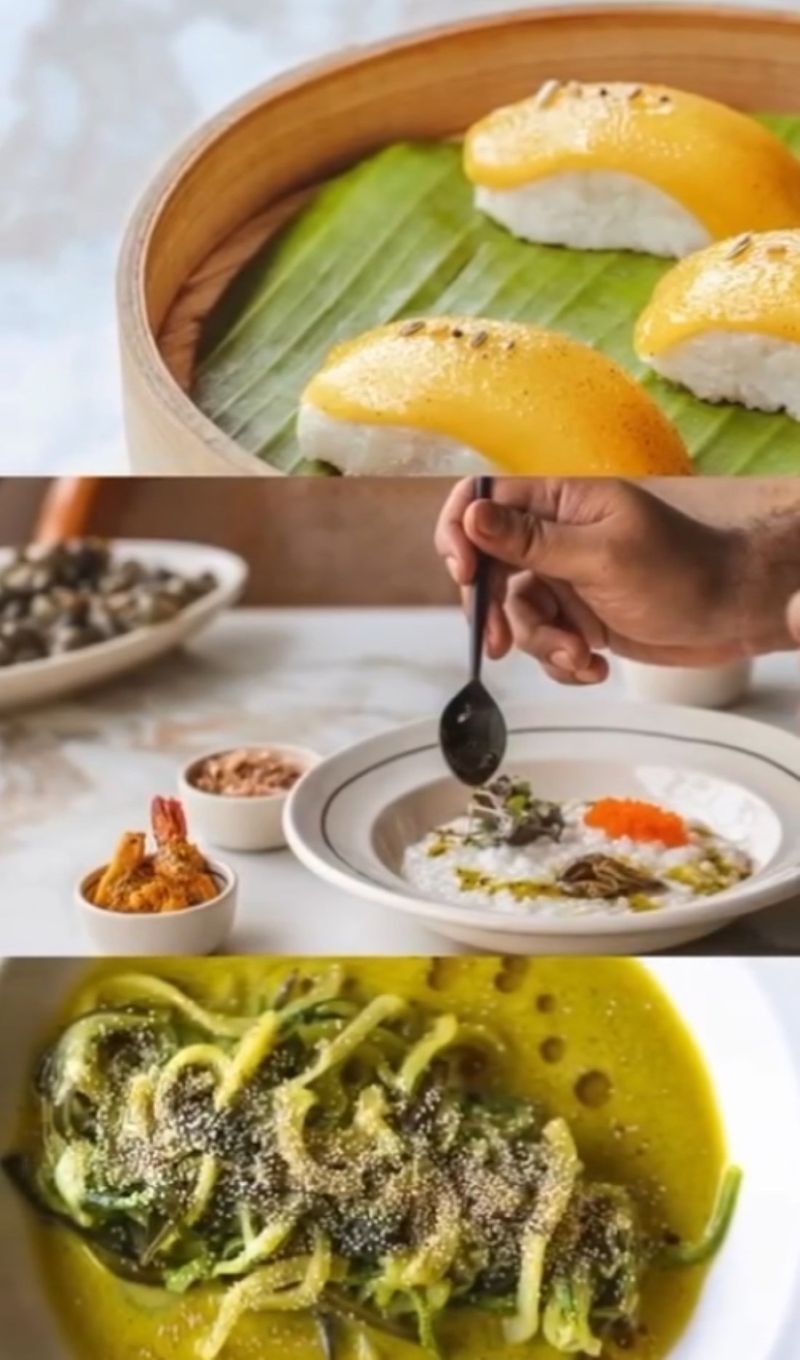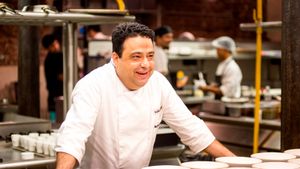Chef Auroni Mookerjee must look at food as art. Standing in front of an empty canvas and wondering: “If I add a bit of this, and then a bit of that, and slow cook it for these many minutes before garnishing it with that…”
Not that he actually said these words, but as he talks about his perception of food, Bengali food especially, it’s hard to not assume so.
In town this weekend to showcase a special “Probashi Table” at Zarf at Sheraton Grand Bengaluru Whitefield Hotel, for which the chef has put together something truly eclectic, he talks about moving on from the Kolkata-based restaurant Sienna Café to his new assignment as the culinary director for Bright Hospitality, which is quite different from what he’s been doing for the past few years and how to be a good chef, you need to keep an open mind and your ego at bay.
“With Bright Hospitality, it’s going to be a whole new thing for me, much different from what I have done before, and I am still new to the system so everything is a learning curve still. The company has its own brands and I’ll be doing a bit of everything, but I think what I still know best and what's closest to my heart is Bangla ranna,” he begins. Mookerjee, having grown up and studied in Delhi, says he’s more ‘probashi’ than anything. “I always describe myself as a Bengali by blood with Delhi in my heart,” he says. Therefore, his food, almost always, bears evidence of Delhi-meets-Kolkata, which is also what he intends to serve at the Bengaluru pop-up. “Let me give you an example, we used to go to INA Market to shop in Delhi, and it’s filled with seafood. Bengalis aren’t big on seafood if that makes sense. But my father and I would carry back all sorts of seafood from the market, and make Bengali food with it. You know, clams and mussels taste equally good with shorshe baata (mustard paste),” he adds.
It is this experimentation, or what the chef calls a ‘family hobby’ that drew him towards the culinary arts and more so playing with ingredients. The idea is to be able to push boundaries without messing around with the core, he says.
Delhi meets Kolkata in Bengaluru

For the Bengaluru event, the chef says he’s really looking forward to what people will have to say about the meal. So, what is he cooking anyway, we ask. “I am making ‘jhinge (ridge gourd) noodles’; it’s a lot like the ‘zoodles’ or zucchini noodles. My aunt, who was a teacher and travelled a lot, loved to make ‘jhinge posto’ (ridge gourd cooked with poppy seed paste) but wouldn’t always find ridge gourd when she went abroad, and therefore would make the posto with zucchini. So, if you can make that, why can’t you have zoodles where the zucchini is replaced with jhinge,” he laughs.

Another dish, which the chef says is a personal favourite, is the ‘Gola Bhaat Bowl’ (gola baat simply means overcooked rice). "This is going to be served with different types of seafood. For instance, there will be a jhol (curry) with fish, bori (dried lentil dumpling) and brinjal. Typically, I’d use pabda (butterfish) as the fish but since I am in Karnataka, I’ll be using the kane (lady fish). I’ll also be making the shorshe jhal (mustard paste gravy) with clams and mussels and finally, a bonito bharta. And the one dish that I am really excited about is the potato gnocchi a bone marrow jhol (curry/sauce). It’s inspired by the typical Sunday mutton curry that Bengalis love, not to mention extending our love towards the ‘aloo’. I always do chutney as a palate cleanser and for this meal, I am making a nigiri with mango chutney, but it’s not really the typical nigiri or chutney,” says the chef.
The one thing, which was perhaps a natural result of the general direction of our conversation, the chef and I both agreed to is that Bengali food, despite its massive fan base and loyalties, hasn’t seen a lot of innovation, at least not as much as some of the other regional cuisines have enjoyed and continued to enjoy. There’s Tresind in Mumbai, Avartana in Chennai, the whole Hunger Inc brand that Mookerjee says is doing such incredible stuff with Indian food and so on, but when it comes to the food from Bengal, the potential is immense and exploration fairly low.
“The one thing I have to say at first is that to me, Bengali food is not just food from Kolkata or West Bengal; it’s also food from East Bengal or Bangladesh. And we have amazing regional cuisines here with an incredible repository of ingredients. Each district has its own culinary world. And then there’s the influence. Not just from being a melting pot for being a former British Capital but influences from the neighbouring states. always stay grounded to something within the culture and within the community. I completely agree. And especially with the Bengali community. Now why is Bengal waiting to burst onto the scene? Of course, we have amazing vast cuisines and culture. Each district shows its own culinary world. Calcutta as a city has multiple cuisines because the melting pot culture of it being a former British capital. Now for us to do this right, the only thing that’s needed is for our own community to be their own champions and not wrinkle their noses at the thought of innovation in food. My secret sauce to this is to be empathetic to your culture and community,” Mookerjee explains.
Will he truly get the freedom to be what he wants to with his new project, given that going corporate is not always the best idea? “This is where I come from, and it’s the one simple truth to the F&B business. You have to have a strong financial spine to succeed. I also need to be mature enough to now see that stability is important even for a creative person to do well. I am taking on a role from a captain to coach, which also means I have to take on entrepreneurial work. Does that mean I won’t be doing what I love the most? Not at all. But I also want to provide my team with good R&D, help the company grow and so on. It would be extremely short-sighted of me if I said I only want the freedom to think about myself. Corporate is not always bad; look at some of the best restaurant companies across India – Rohit Khatter with Indian Accent, Aditi Dugar with Masque, and of course Hunger Inc, my favourite example. One can achieve the balance of productivity and creativity,” he says.
The other thing, Mookerjee adds right before we sign off is quite possibly the most valuable thing he can tell a young chef. “Your validation will come from your diners, not from yourself. You are running a restaurant, and a restaurant ultimately runs on diners. So quite often you cannot take 10 leaps ahead of your diner. We are of course artists, but we are still commercial artists, so we really have to at the same time pay attention to what makes our diner smile. And how do you do this? Tone down the ego. Ego has no place in the kitchen.”
Disclaimer: The views expressed in the article reflects the author(s) opinions and do not necessarily represent the views of the publisher and editor.


_1717750109976_thumb_1200.jpeg?w=3840&q=75)
